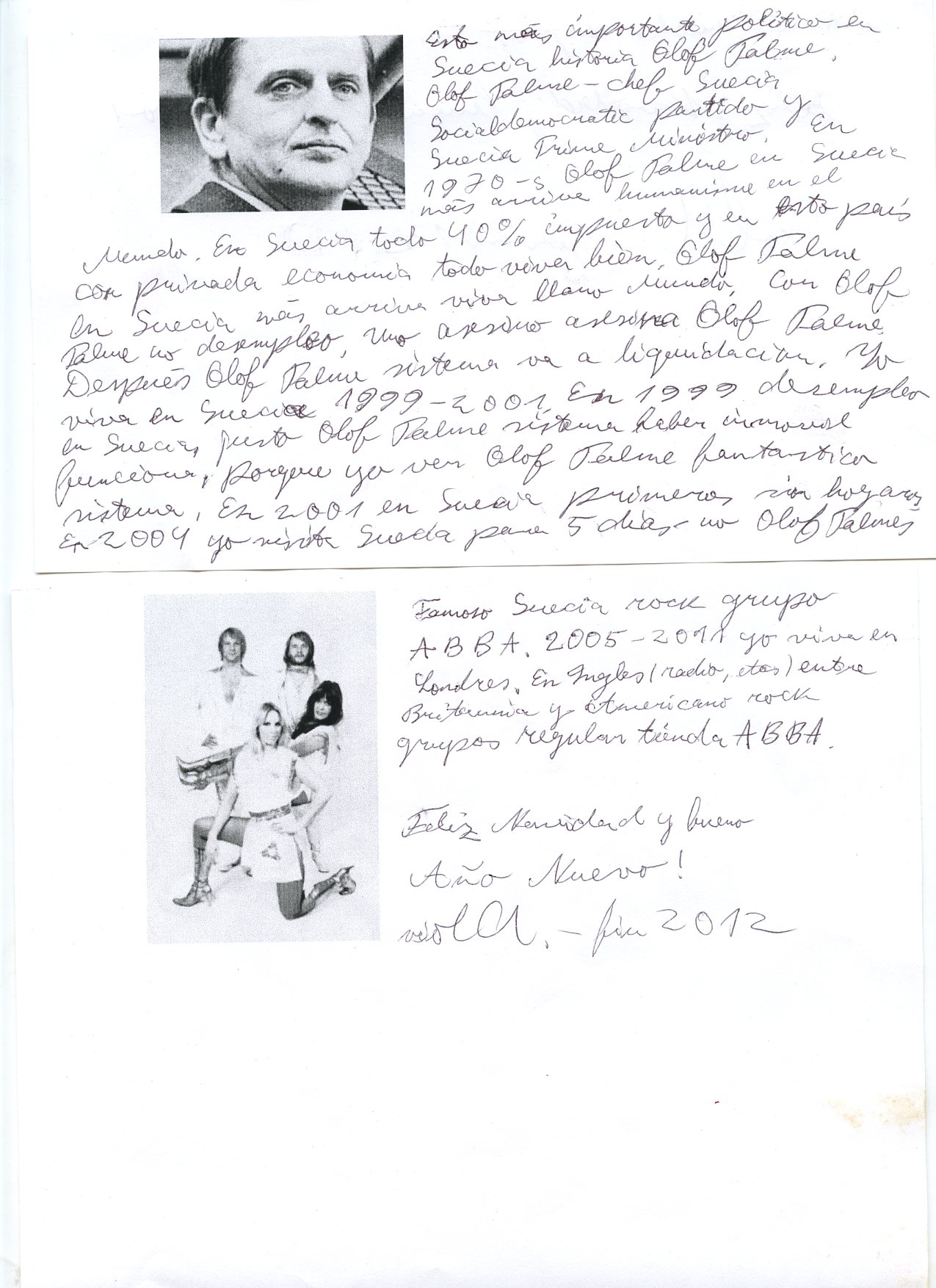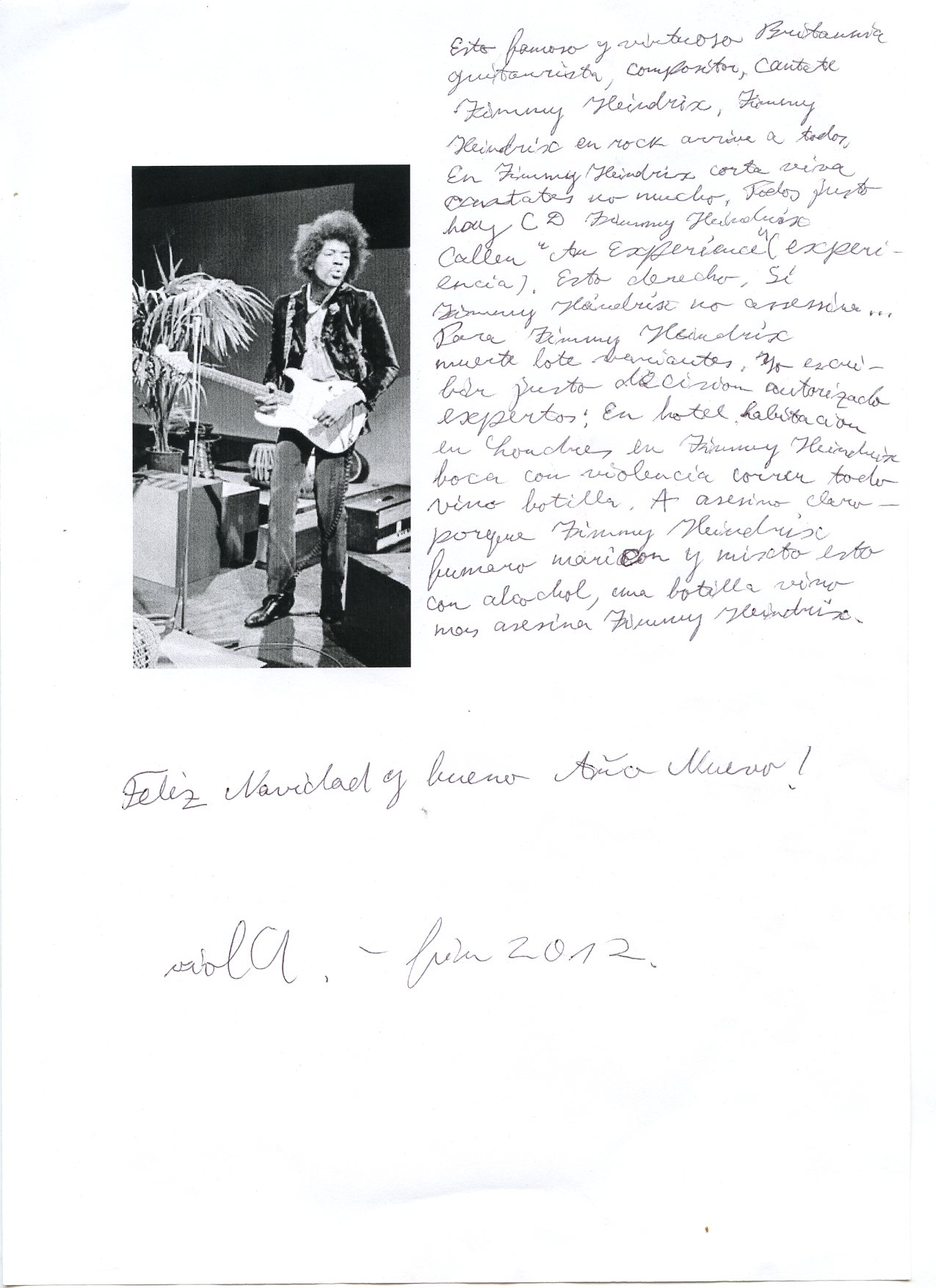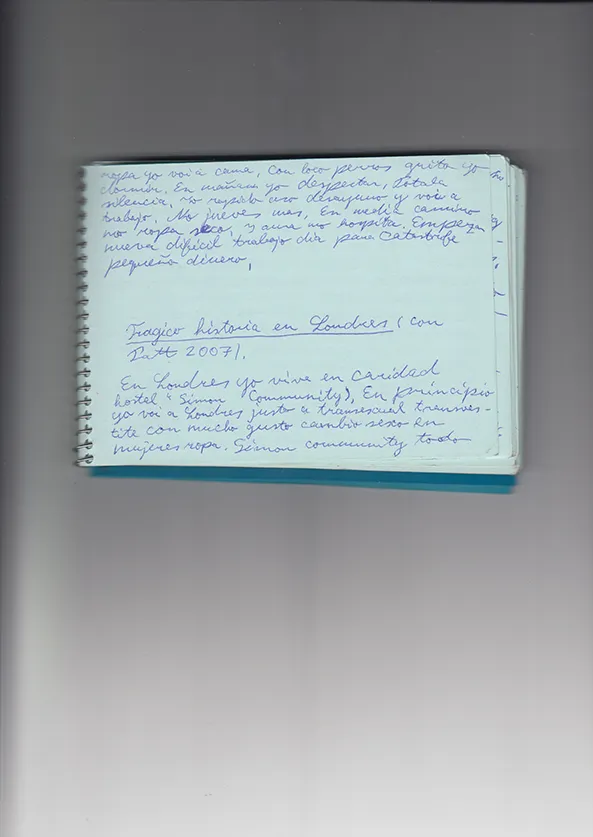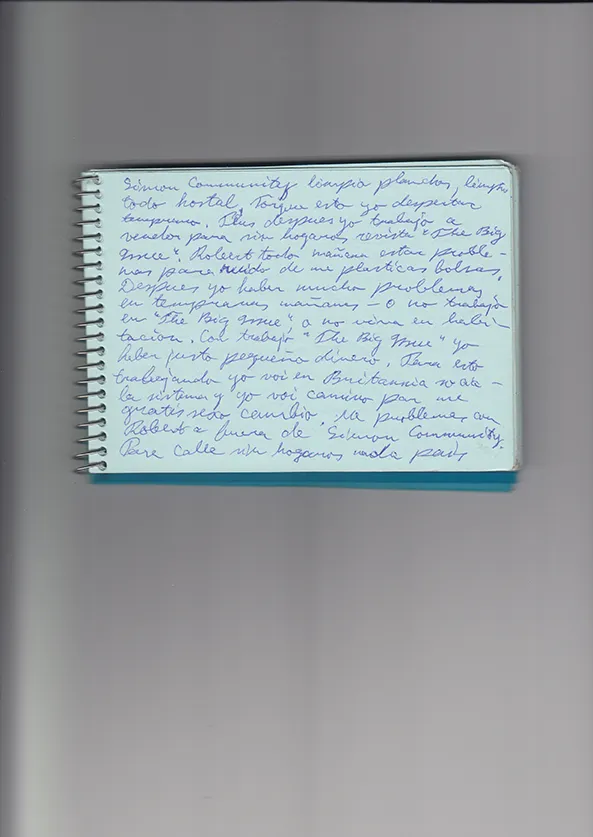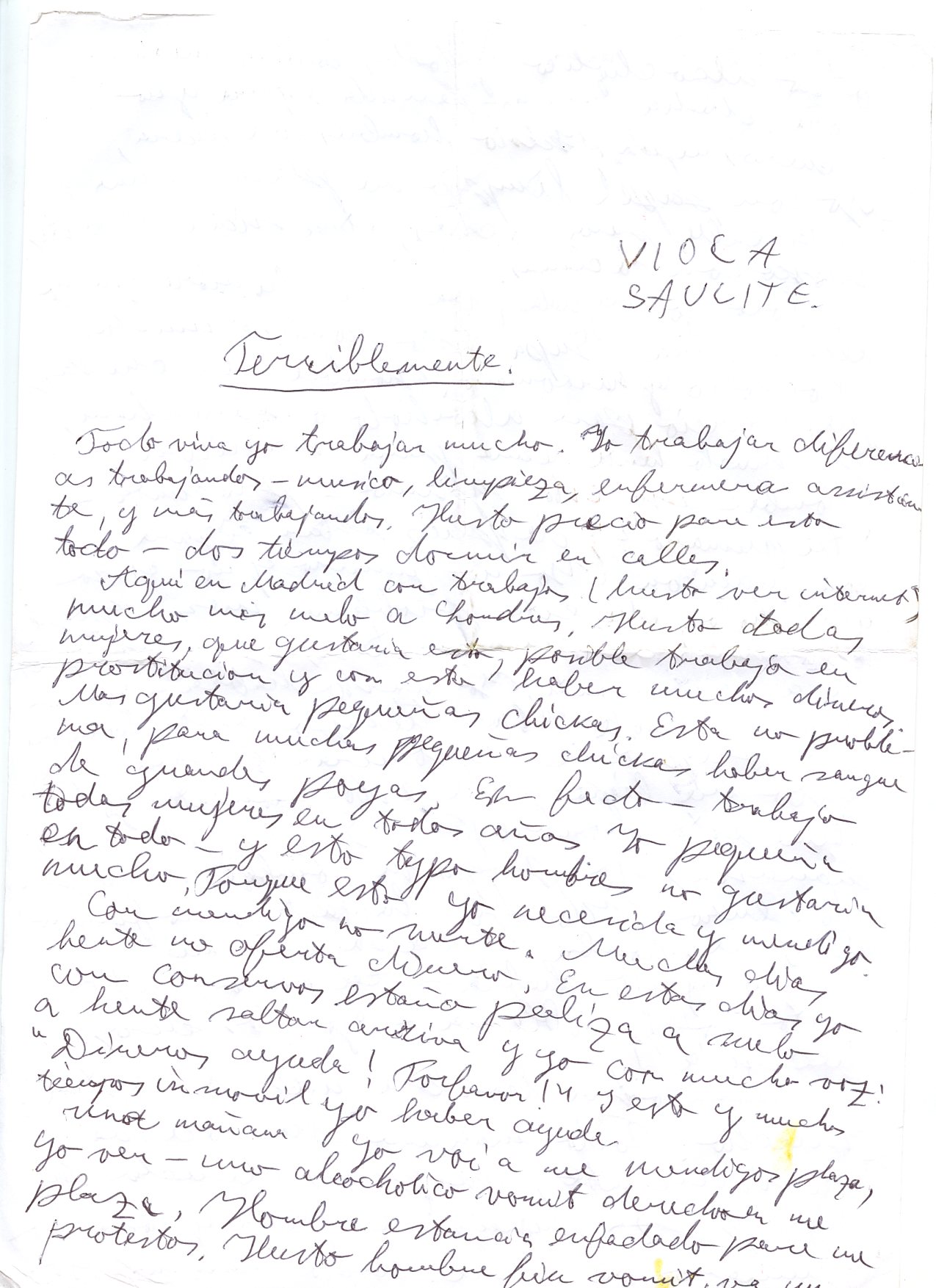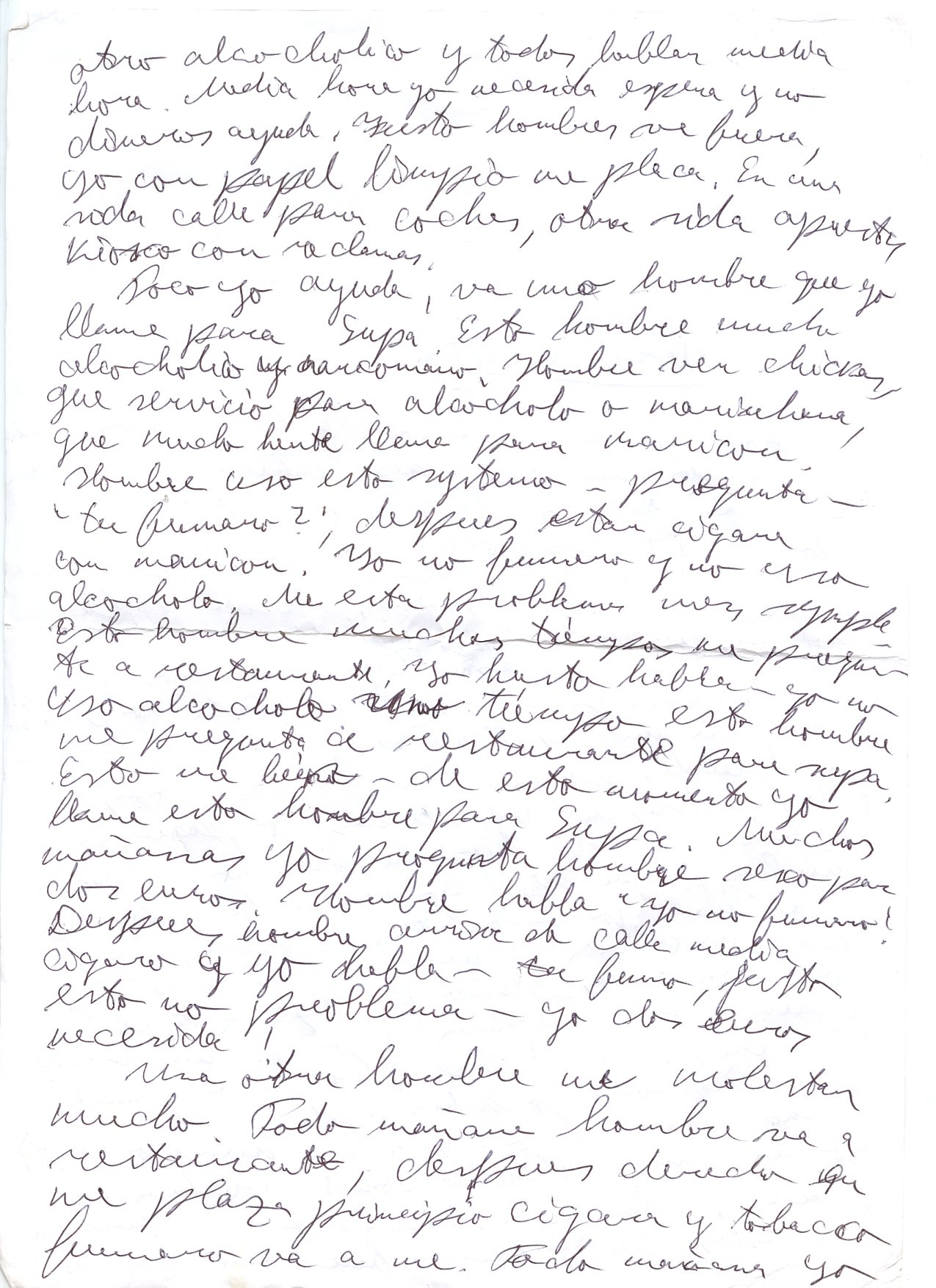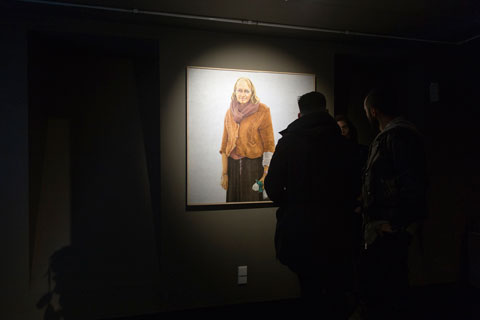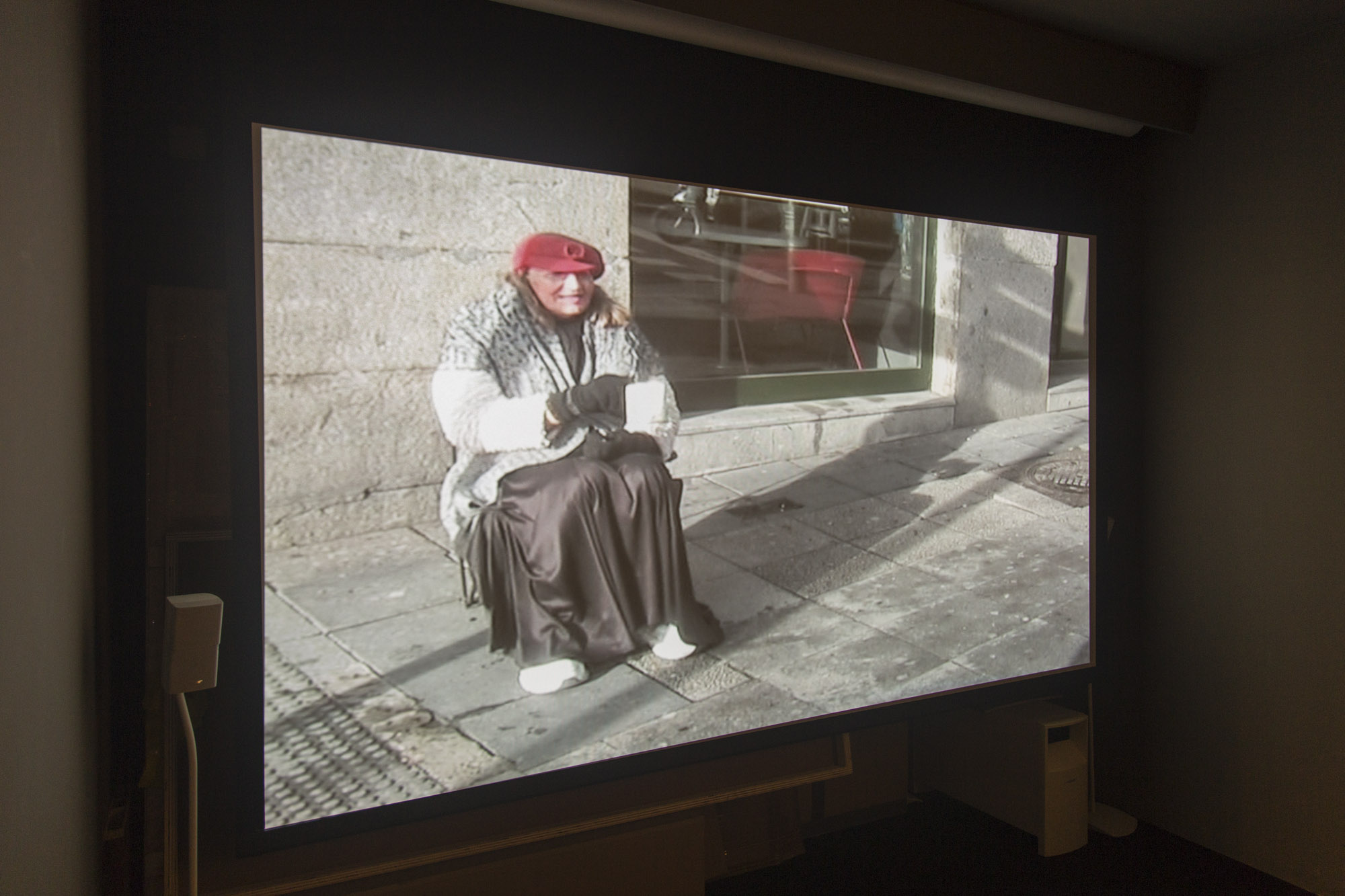This project begins with an essential question: What does it mean to appear in the world? In The Human Condition, Hannah Arendt argues that being human is not merely to exist, but to be present before others — to participate in the shared space as someone visible, someone whose voice and body matter. From this premise, the portrait of Viola Saulitre is not conceived as a purely aesthetic gesture, but as a political act: a reclamation of her right to appear and to occupy a place within a social structure that usually renders her invisible or reduces her to a marginal figure, denying her full recognition as a person.

María Bisbal and Viola Saulitre met in 2010. Over the course of several years, a relationship grew between them through the smallest of everyday gestures — María would bring her food, tend to her needs, listen to her stories. Out of this connection, the work took shape, with the creation of Viola’s portrait as its cornerstone.
This is the portrait of a trans immigrant woman who inhabits the sidewalk of Atocha Street in Madrid — a territory of survival and resistance. Her figure, teetering at the edge of the visible and the tolerable, emerges as a lucid embodiment of the tensions coursing through our present: systematic exclusion, structural violence, racism, transphobia, and the precariousness of aging.
The portrait shows Viola standing, facing forward with no distracting background, holding plastic bags in one hand and letting the other hang in a soft, loose gesture. She wears a maroon wool jacket, a thick scarf, a pink plastic bracelet, and a long dark skirt. Everything about her — the layers, the materials, the warm and practical colors — constructs an aesthetic of survival, deeply intentional. This is not an image built from the folklore of marginality, but from the dignity found in the composition of details: the coat worn as armor, the cheap watch as a declaration of style, the posture of her body as a declaration of presence. Her body, far from neutralized, speaks with a silent force. Each fold in her clothing is also a way of narrating herself.
This painting is not a capture. Her portrait does not scream; it lingers in a tactile silence that contrasts with the nearly performative intensity of her presence on the street. Through the stillness of the image, a space opens to reflect on the mechanisms of representation that operate when we look at “the other,” and to frame Viola’s experience not as an object of pity, but as the subject of a fierce will: the will to have breasts, to be called by the name she chose, to resign herself — yes, resign herself — to the marginal logics imposed on her, but also to dominate, inhabit, and twist them.
